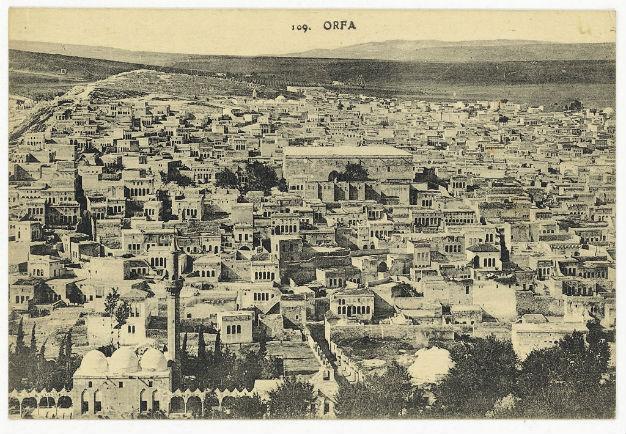Turkish Foreign Ministry exhibition aims to highlight joint history with Armenians
Emine Kart - ANKARA

An exhibition illustrating eight-centuries of Turkish-Armenian relations and hosted in Istanbul by the Turkish Foreign Ministry has been extended due to due to overwhelming interest, with Turkish diplomats expressing the desire to look at Turkish-Armenian relations from a humane perspective.
The exhibition, titled “With the Intention of the Pomegranate: It’s Time for Remembering, Not Forgetting in Turkish-Armenian Relations,” was opened on April 7 and was supposed to close on April 29. It has been extended until May 6.
Armenian diaspora around the world widely describes itself as “scattered like pomegranate seeds across the world.”
“In the process started in the Prime Ministry of our president with his condolence message dated April 23, 2014, and our prime minister’s statements in 2015 within the framework of our country’s humanitarian and constructive stance in the context of Turkish-Armenian relations, messages aimed at strengthening the ties of friendship between the two peoples are being expressed on every occasion and steps compatible with this rhetoric are being taken,” Turkish diplomatic sources told Hürriyet Daily News this week, referring to Turkey’s first-ever statement offering condolences to the descendants of slain Ottoman Armenians on April 23, 2014, just a day before the 99th anniversary of the mass killings at the hands of the Ottoman Empire during World War I.
‘Focusing on the experience of living together instead of 1915’
“In light with this rhetoric, the exhibit aims to highlight facts concerning the joint history of the two peoples and their experience of living together instead of degrading Turkish-Armenian relations into a debate circling around the 1915 incidents,” the same diplomatic sources, speaking under customary condition of anonymity, said.
On Jan. 20, 2015, a day after the eighth anniversary of the assassination of Turkish-Armenian journalist Hrant Dink, Prime Minister Ahmet Davutoğlu called on all Armenians to jointly seek ways to resolve their historical differences with Turkey, stressing that it is a must for Turks and Armenians to “engage in humane relations and to recognize each other in light of 800 years of common history.”
An inauguration ceremony was held in the Tophane-i Amire Culture and Arts Center of Mimar Sinan University of Fine Arts for “With the Intention of the Pomegranate: It’s Time for Remembering, Not Forgetting in Turkish-Armenian Relations” on April 6, with participation of Deputy Foreign Minister Naci Koru as well as of Aram Ateşyan, the acting head of the Armenian Patriarchate of Turkey; Levon Zekiyan of the Apostolic Administrator of the Armenian Archieparchy of Istanbul; Hansjörg Haber, the head of the Delegation of the European Union to Turkey, and senior diplomats from the consulate generals of France, Italy and the United States in Istanbul.
A pomegranate, Anatolia and ‘the other’
“We would like to highlight the message of ‘unity in diversity’ as expressed by the symbol of ‘pomegranate’, by presenting the cultural richness of Anatolia, a meeting point of ancient civilizations,” Deputy Foreign Minister Koru said during the inauguration, where the Istanbul Turkish Music State Ensemble played a selection of pieces that Armenian composers contributed to classical Turkish music during the Ottoman period, while world-renowned Armenian-American musician Ara Dinkjian provided a musical feast for the audience with his compositions.
“Because we know that, as long as we manage to establish direct relations between people, we will remember that nothing related to this geography is strange and no one is the ‘other’ to us,” Koru said at the time.
According to “Armenian Food: Fact, Fiction & Folklore” (2006) by Irina Petrosian & David Underwood, the pomegranate is one of the most recognizable symbols of Armenia. In Armenian mythology, it symbolizes fertility and good fortune. “In fact, it has turned into a national cliché,” say Petrosian and Underwood, noting that the pomegranate is a commonly used theme in Armenian art and culture including cuisine.
The Foreign Ministry plans to open the same exhibition in “significant centers abroad” in the upcoming period, the diplomatic sources said.
 An exhibition illustrating eight-centuries of Turkish-Armenian relations and hosted in Istanbul by the Turkish Foreign Ministry has been extended due to due to overwhelming interest, with Turkish diplomats expressing the desire to look at Turkish-Armenian relations from a humane perspective.
An exhibition illustrating eight-centuries of Turkish-Armenian relations and hosted in Istanbul by the Turkish Foreign Ministry has been extended due to due to overwhelming interest, with Turkish diplomats expressing the desire to look at Turkish-Armenian relations from a humane perspective.